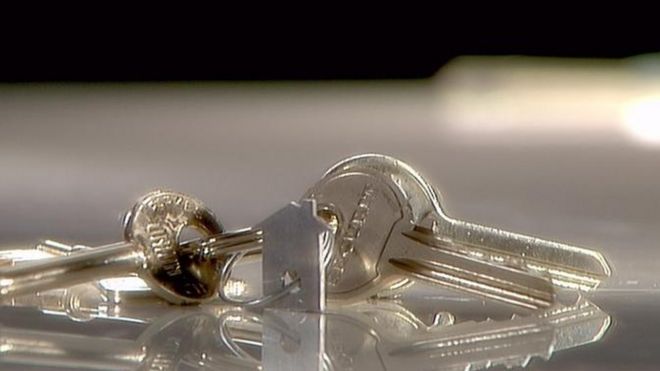
Annual house price growth remained subdued in March, according to the Nationwide building society.
The increase of 2.1% was down slightly from February’s rate of 2.2%.
Nationwide said “subdued consumer confidence”and wage growth not keeping up with the rise in the cost of living had offset healthy employment gains and low borrowing costs.
But it expects house prices to hold steady in 2018 due to low unemployment and lack of properties on the market.
Robert Gardner, Nationwide’s chief economist, said: “Looking ahead, much will depend on how broader economic conditions evolve, especially in the labour market, but also with respect to interest rates.”
The building society is continuing to predict a 1% rise in house prices during 2018.
The regional breakdown in Nationwide’s figures show a marked contrast between London and other areas of the UK.
The capital was the only part of the country to record a fall in house prices when comparing the first quarter of the year with the same period of 2017. Prices in London fell by 1%.
Jonathan Hopper, managing director of Garrington Property Finders, said: “London’s property market shows no sign of giving up its wooden spoon, as the slowdown in the capital worsens.
“What began as a cooling of prices in the capital’s prime and super-prime postcodes is turning into an ever more widespread frost.”
However, London still remains the most expensive area, and a typical home in the south of England costs £331,047 – twice as much as the typical price of £163,138 in the north of England, the Nationwide said.
“These trends have so far made only small inroads in narrowing the North-South divide,” Mr Gardner said.
Price rose the fastest in Northern Ireland, increasing by 7.9% in first three months of the year compared with the same period a year earlier. Prices in Northern Ireland still remain well below their 2007 peak.
House prices rose by 6.1% in Wales over the same period, the Nationwide said, and there was a 0.2% increase in Scotland.


